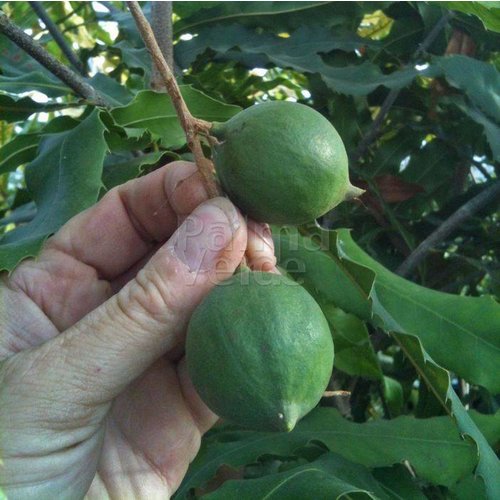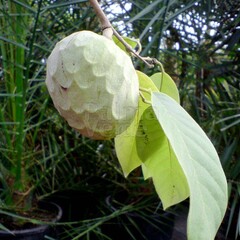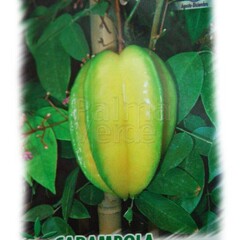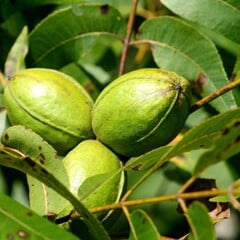Macadamia integrifolia or macadamia nut originates from Australia. The macadamian nut tree is also called baphalnut or Australian nut.
This plant was discovered by John Macadam around 1850. He is family of the Proteaceae and belongs to the dicotyledon.
The Macadamia integrifolia is evergreen, the leaves are dark green and shiny.
There are 9 different species of the nut, such as Macadamia integrifolia, M. claudiensis, M. grandis, M. hildebrandii, M. jansenii, M. whelanii, M. neurophylla and M. tetraphylla.
Only two of these are interesting for their tasty edible nut and that is the Macadamia integrifolia and the Macadamia tetraphylla.
The other species contain unsavory notes.
The blossom is white in color and hangs down in bunches and blooms mid-spring.
Trees of 5 years and older get the fruit set after the blossom and can deliver the first nuts.
In cultivation, besides the fact that the nuts are such a delicacy for consumption and very nutritious, oil is also extracted from them.
This oil is widely used for skin oil as an alternative to mink oil.
The macadamia nut is best kept in a tub and cool in the winter. Allow little water until the weather becomes warmer in the spring. The macadamia nut is drought-tolerant.
Also, pruning is no problem if the plant becomes too large.
Older plants can tolerate a few degrees more frost, zone 9a -5ºC.
Winter hardiness zone 9b (-3ºC).















